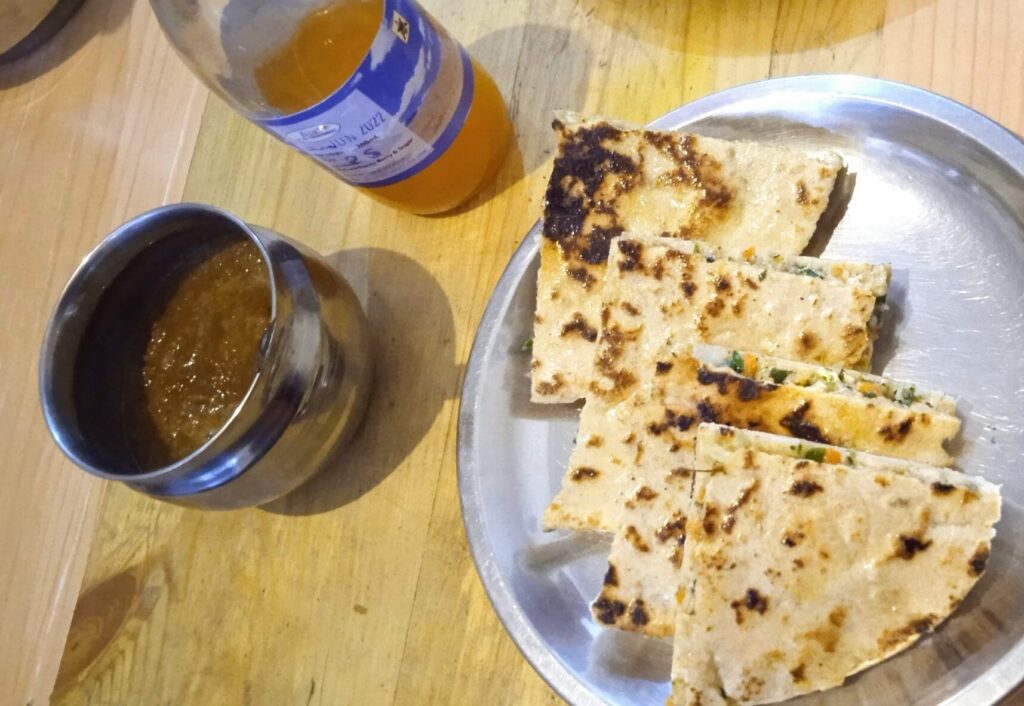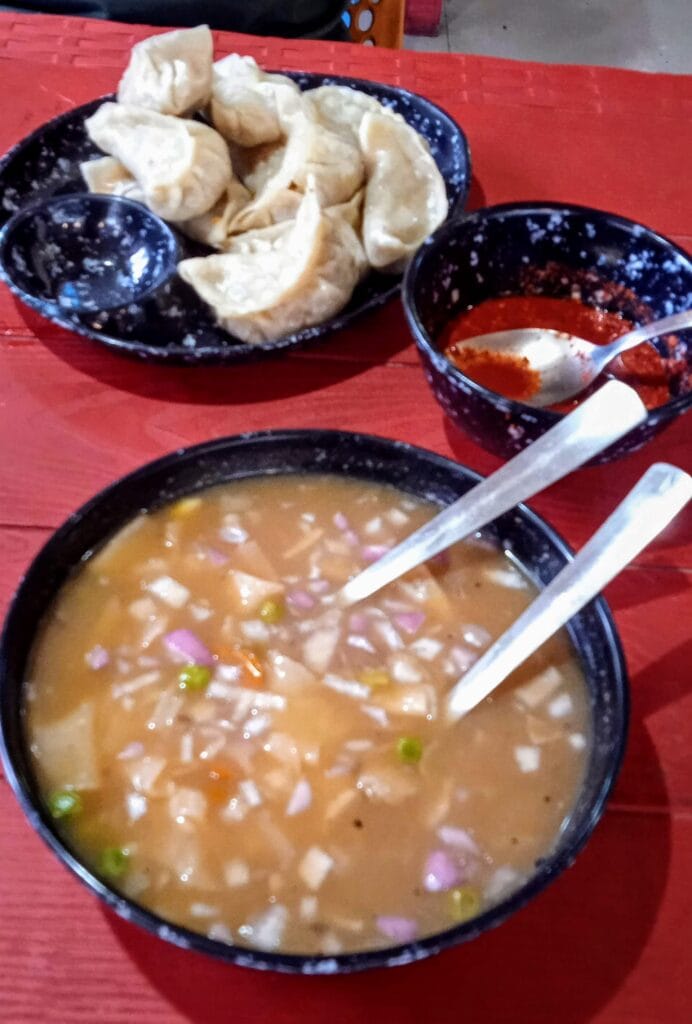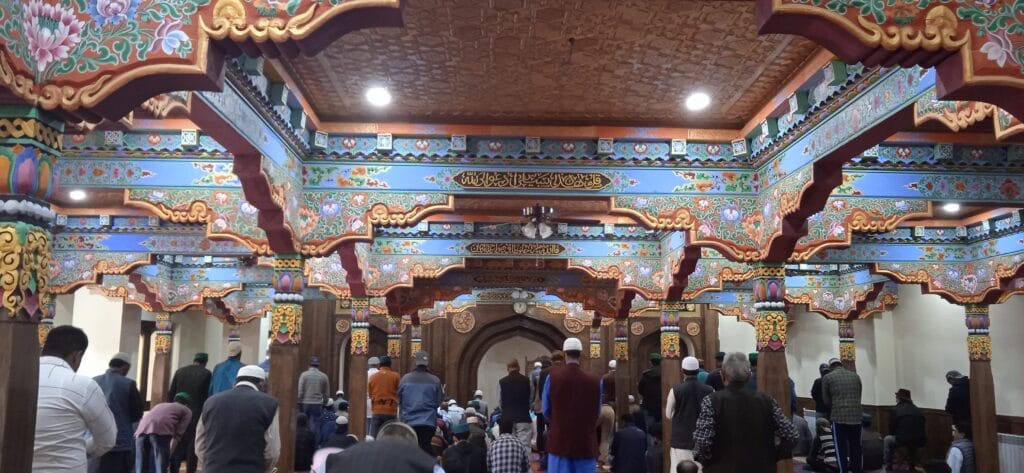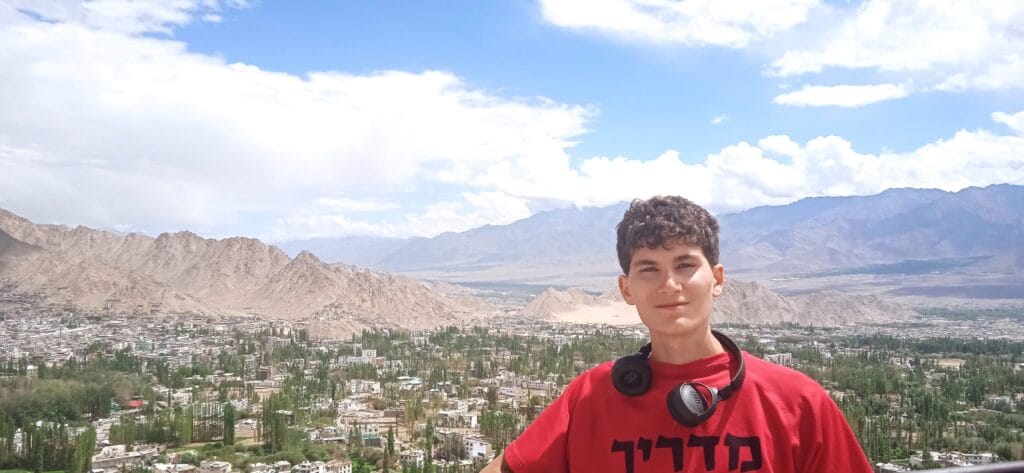Flavors of Ladakh:
Sacred Echoes Of The Himalaya
Beginning the Journey
From the outset, the days unfolded gently. First, we explored Leh, the capital. Then, we shared meals with locals and monks. After that, we trekked beyond roads, sleeping in homes where apricot trees swayed in the wind. As we moved from place to place, every shared plate revealed something new. In truth, the flavors of Ladakh tell more than one story. They speak of season and place, of ritual and memory. Most importantly, they linger.

Simple, Hearty, Ancient
Barley shapes most Ladakhi meals. You’ll find it in roasted flour (tsampa), soupy stews, and loaves of khambir bread. Furthermore, butter tea is poured often—salty, fatty, and warming. At first, it surprises. Eventually, though, To learn more, you can also read Ju-Leh Adventure‘s article about Ladakhi cuisine!
Meals remain simple but nourishing. Locals prepare skyü, a thick stew of barley dough and root vegetables, to fuel long winters. Most importantly, they share each bowl. As a result, food becomes a communal act. Without a doubt, this simplicity lies at the heart of the flavors of Ladakh.
Foraging and Fermenting with the Seasons
Clearly, seasons shape every ingredient. In summer, people gather wild garlic, dandelion leaves, and berries. Then, they sun-dry everything for winter. Women walk mountain paths with woven baskets, collecting what grows nearby. In colder months, those dried greens return to warm broths and dumplings.
Meanwhile, apricots thrive in this dry mountain climate. Locals turn them into jams, juices, and oils. Often, they preserve the fruit as a sweet offering for guests. Consequently, seasonal cycles dictate not only what’s eaten but also how it’s prepared. In many ways, these rhythms give depth and soul to the flavors of Ladakh.


Flavors of Ladakh: Kitchens with No Borders
Alex and I shared food from all over—Tibetan momos, Kashmiri curries, South Indian dosas. Nevertheless, Ladakhi meals left the deepest impression.
We tasted momos stuffed with minced meat, steamed and served hot. Also, we slurped thukpa, a noodle soup with vegetables or mutton. Although nothing was spicy, every bite was deeply satisfying. Especially after hours on mountain trails, the warmth felt essential. Thus, simple ingredients carried deep comfort. Truly, these shared dishes exemplified the most genuine flavors of Ladakh.

Sacred Spaces, Shared Plates
Our most meaningful meals often happened in monasteries. At Lamayuru and Thiksey, monks welcomed us with barley porridge and butter tea. Sometimes, we helped chop vegetables. At other times, we simply listened to the echo of chants.
Here, food becomes part of the spiritual rhythm. Every meal feels intentional. Every offering, a reflection of care. In other words, eating here turns into an act of presence. It becomes clear that the flavors of Ladakh carry a sacred, timeless essence.

A New Generation of Tradition
Today, Ladakhi chefs honor tradition while embracing change. For instance, Nilza Wangmo at Alchi Kitchen revives ancestral recipes with pride. Similarly, Rigzin Namgyal at Syah reinvents old ingredients with a modern vision. Together, they lead a quiet culinary revival. (Condé Nast Traveler)
Moreover, their work inspires younger generations to reconnect with local identity through food. In turn, these efforts keep Ladakhi cuisine evolving without losing its roots. As such, the evolving flavors of Ladakh continue to tell new stories.
Final Sips
In Ladakh, food becomes memory. It moves with the seasons and settles in the spirit. Alex and I arrived for landscapes. Yet, we stayed for flavors, warmth, and silence shared with strangers.
These meals weren’t fiery. They didn’t shout. Instead, they whispered. Still, they remain. Through quiet dishes and heartfelt company, the flavors of Ladakh left their mark.
